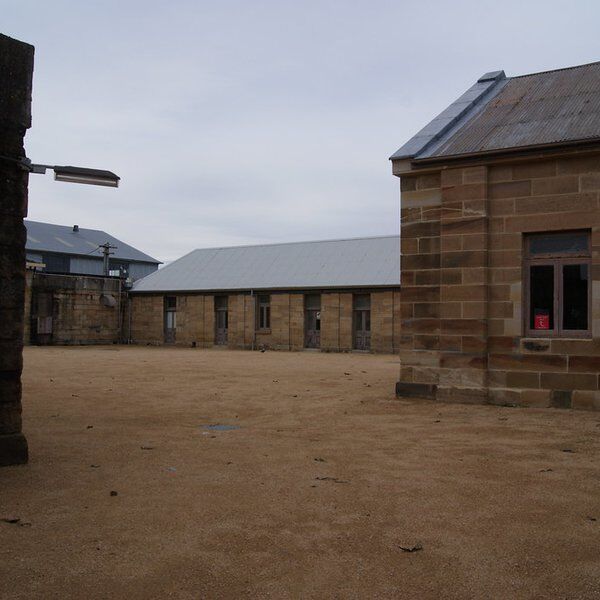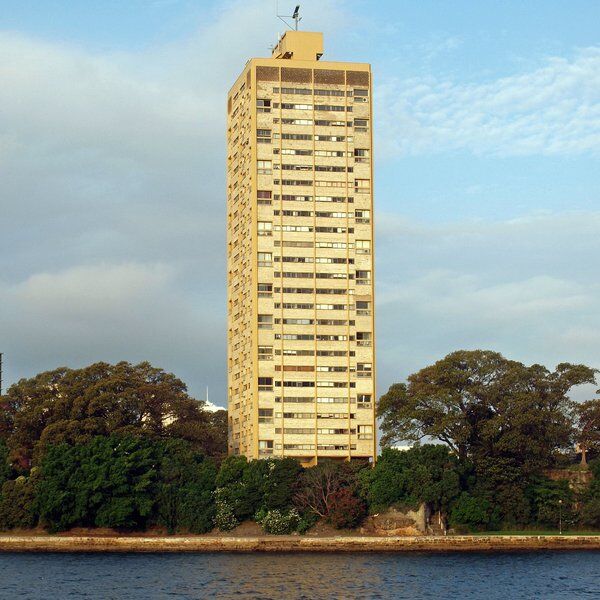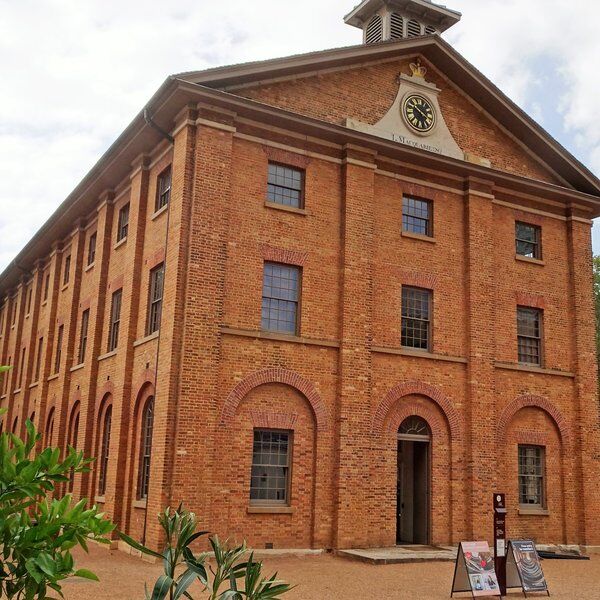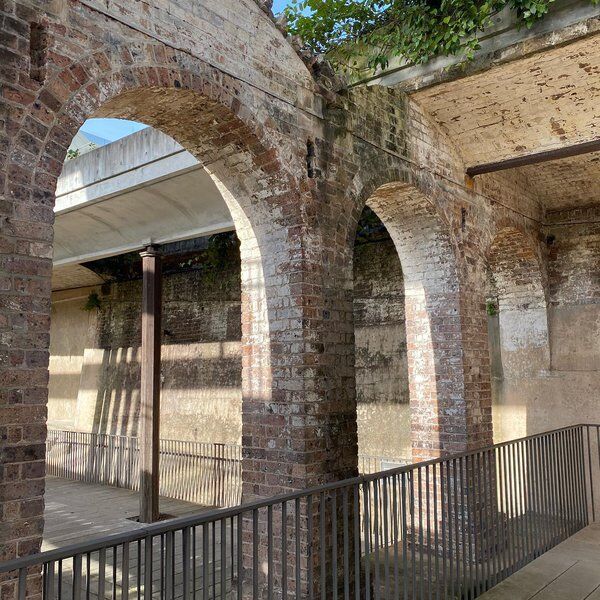
Cockatoo Island Before The Prison
Prior to the establishment of the NSW colony, Cockatoo Island is believed to have been used as a fishing base by indigenous Australians. In 1839 however it was given a very different purpose.
Since 1787 the British government had been sending convicts to the 'Great Southern Land', partly to reduce overcrowding in London's prisons, partly to serve as a deterrent.
Many of these convicts successfully integrated themselves into this burgeoning new society. Some however reoffended and had to be punished further for their crimes.
Beginning in 1828, reoffenders from the NSW colony were sent to Norfolk Island Prison. When this grew overcrowded, another was needed: Cockatoo Island.

Cockatoo Island Prison
Early Controversy
The first job given to Cockatoo Island's new prisoners, in 1839, was that of excavating sandstone tanks to store drinking water in. The second was to create grain silos so that the colony could prepare for shortages.
The British government objected to this however, arguing it was against the spirit of free trade. The stored grain was released back into the market and the silos were made redundant.
This was to be the first of many controversies to spring up around the prison.

The Corrupt Superintendent Of Cockatoo Island
In 1841, Charles Ormsby was named the prison's superintendent, a decision that immediately raised eyebrows. Ormsby had been dismissed from his previous role at Norfolk Prison for suspicious circumstances surrounding a sheep cull.
Those sceptical of his appointment on Cockatoo were soon vindicated when, in 1849, he was reprimanded for running his own private enterprises off of the island and generally treating the place like his own fiefdom. Using prison labour he had been growing cabbages, selling up to 40,000 a year. On top of this he had been raising livestock, using prison rations for feed and silencing any protests with a lash of the cat-of-nine-tails.
Despite all this he remaned in his post until 1859 when he was at last ousted and replaced by Gother Kerr Mann, an engineer who had overseen many of the island's construction projects, including the building of the Fitzroy Dock, Australia's first drydock.
Mann remained in his post until he retired, in 1870, a year after the prison itself had closed. During his tenure as superintendent the prison's most notorious legend was born, that of Captain Thunderbolt.

Escape From Cockatoo Island
In 1856, Frederick Ward was sentenced to ten years on the island for moving stolen horses. Four years later he was released for good behaviour on one condition: that he check in at the police station once every three months.
A free man, Ward fell in love with an Aboriginal woman called Mary Ann Bugg. Years later, Ward missed his three monthly check-in to attend the birth of their first child. He was arrested and sent back to Cockatoo to serve out the remaining six years of his sentence, with an extra three added on for good measure.
After only a matter months back behind bars he escaped from the island along with another prisoner. Just how they got out to this day remains unclear. Legend has it that Bugg swam to the island, tools on her back, and released them from their binds. The trio then swam through shark-infested waters to the mainland and fled on horseback. This story is disputed however.
Now a man on the run, Ward, with the help of Bugg, learned how to live off of the bush. He successfully evaded capture for years, making his way from town to town, robbing mailmen, travellers, inns and coaches.
In one legendary incident he hammered down a toll-keeper's door.
'By God, I thought it must have been a thunderbolt,' the toll-keeper declared.
Ward brandished his gun. 'I am thunder and this is my bolt.' It is this that earned him the nickname 'Captain Thunderbolt'.
In 1870 the law at last caught up with him. Having robbed some travellers drunk, he was fleeing on horseback, pursued by a constable. His horse was shot but he refused to surrender, lunging at the Constable and receiving a bullet for his trouble.
He later died of this wound.
When his body was displayed, hundreds flocked to see it, many paying a shilling for a photo. He had become a folk hero, renowned for his aversion to violence and the gentlemanly manner in which he treated his victims.

Cockatoo Island After The Prison
By the time the prison closed, in 1869, Cockatoo Island had already been the site of a dockyard for 12 years. This continued until 1991 when the dockyard was shut down.
Today, the prison is preserved as a UNESCO World Heritage site and much of the shipping yard remains too.
The island now boasts a campsite of 2,000 capacity, a favourite for those watching Sydney's NYE fireworks display. It also hosts occasional events and was the site of 2009's All Tomorrow's Parties festival, curated and headlined by Nick Cave. It has been used as a filming location and can be seen in Unbroken and X-Men Origins: Wolverine.

Interested in finding more places like this? Try one of our Scavenger Hunts in Sydney - untangle cryptic clues as a team, as you are taken on a journey to the most unique, unusual and bizarre corners of Sydney.
Read more about historic penal institutions in the colonies in our posts on Old Melbourne Gaol, Fremantle Prison and Abbotsford Convent, and read about prisons further afield in our Strangeways Prison, Conciergerie and Wormwood Scrubs posts.













